While many travellers flock to India‘s big cities, there’s far more beauty to discover across the Indian subcontinent. Case in point: Northeast India, more specifically, Meghalaya.
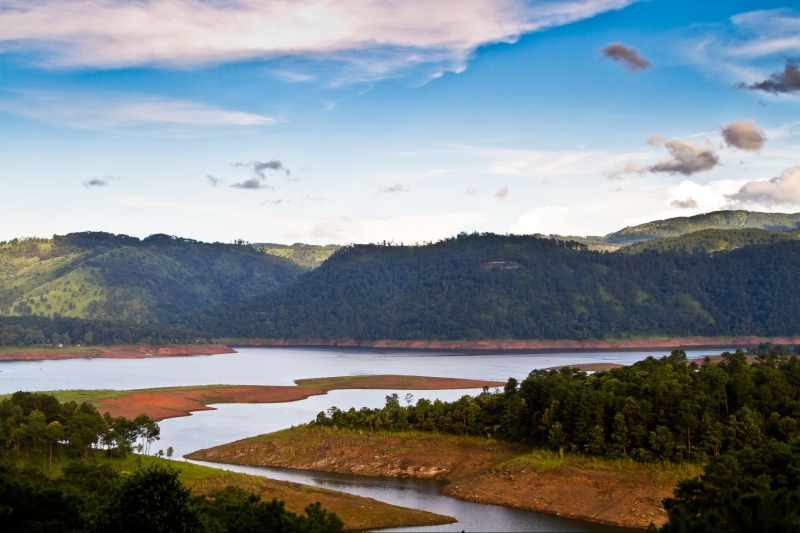
Image credit: Masrur Ashraf
Landlocked between the north-eastern Indian state of Assam and the plains of Bangladesh, Meghalaya is a hilly state filled with amazing natural attractions and restful stillness that will astonish even the seasoned traveller. So, if you’re looking to wander in nature, engage in active outdoor pursuits or discover the traditional way of life, Meghalaya is the place to hit.
1. Enjoy the easy-going pace of life at Mawlynnong, voted “Asia’s Cleanest Village”
Mawlynnong is a small village in the East Khasi Hills. It is close to the capital city of Shillong (just a 3-hour drive) and yet it feels far away from any kind of urban reality. The scenery and cleanliness in the village is the stuff of postcards – cobbled streets are dotted with thatched-roof houses and each house maintains a small garden filled with flowering plants and fruit-bearing trees; plus, all the houses have bamboo-made dustbins outside them. Smoking is completely banned in the village and so is the use of plastics. The entire village is neatly maintained by the locals. In 2003, it was voted the ‘Cleanest Village in Asia’ by a renowned travel magazine, so you know it’s pretty spectacular and utterly tidy.
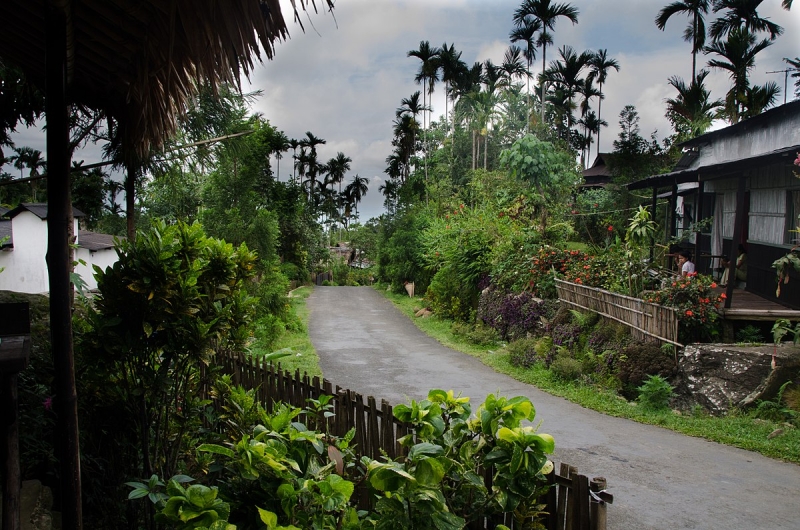
Image credit: Ashwin Kumar
You can check into one of the lovely guesthouses (there is a treehouse, as well!) and grab a local Khasi meal at little restaurants and home-cafes there. After you’ve fueled yourself, be sure to take a tour of the village, which introduces you to the villagers as they complete their everyday routines. We recommend going for an early morning walk through the village to see how they maintain a clean and spotless environment.
Here, you’ll find a bamboo-made Sky Tower, about 85-feet high, from where you can enjoy a bird’s eye view of the village as well as the plains of Bangladesh. Within the village, be sure to check out the early-20th century Anglican church called the Church of Epiphany. Surrounded by dense trees and bushes, this church is known for its Gothic spires.
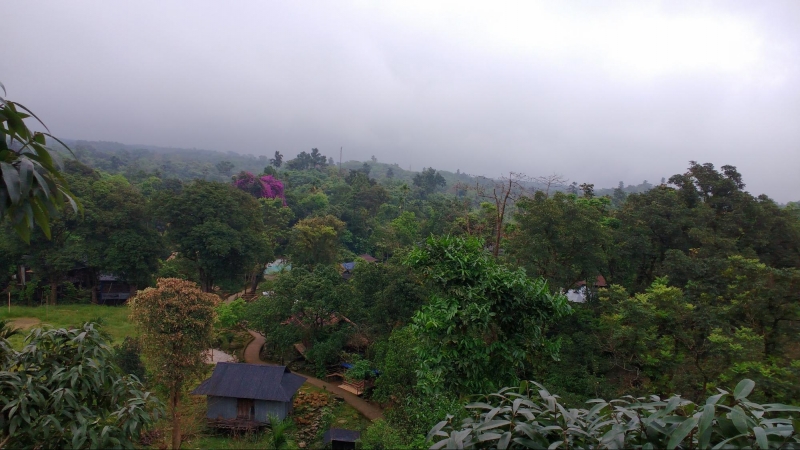
Image credit: Prasun bhardwaj 2106
2. Check out the Living Root Bridges, the country’s only natural (and sustainable) bridge
Meghalaya – meaning ‘abode of clouds’ – is notorious for its lengthy monsoon seasons. This results in swelling of streams and rivers across the region, which pose challenges to local inhabitants. To combat this, the locals created the Living Root Bridges some hundreds of years ago. The bridges were created using the aerial roots of rubber trees, which were twisted around each other and then tagged to betel nut tree trunks. It takes around 15 to 20 years before it becomes strong enough to support the weight of people crossing it.
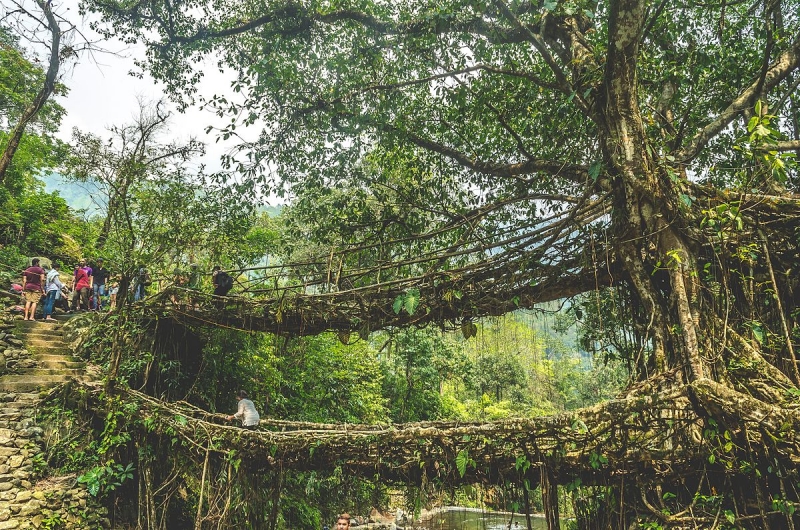
Image credit: Sai Avinash
There are two places where you can find these bridges – Mawlynnong and Sohra (also known as Cherrapunji). The most famous bridge is the Umshiang Double Decker Root Bridge in Nongriat Village near Sohra. Visiting this bridge isn’t easy – you’re required to climb some 3,500 steps from nearby Tyrna, but it’s worth it. Another bridge that is worth visiting is the single-level root bridge in Riwai Village near Mawlynnong – and it’s easily accessible.
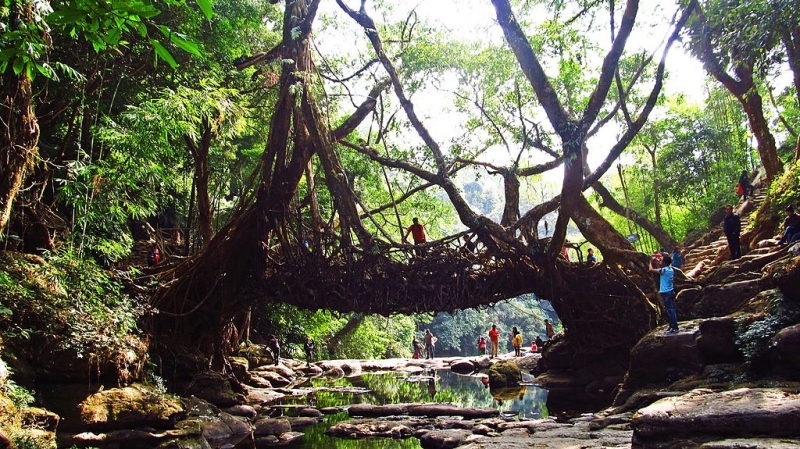
Image credit: Kiranjit
3. Camp under the stars at Nongkhnum Island, Asia’s second biggest river island
About 14 kilometres (9 miles) from Nongstoin village, in the West Khasi Hills district, is the Asia’s second largest river island – the Nongkhnum Island. Getting to the island can be rather difficult – traversing bumpy and rough roads – but once you’ve arrived, you’ll feel like you have entered a different world. It has a river beach and two picturesque waterfalls, the Langshiang Falls and the Weina Falls. Best of all, it’s not inhabited by people and you will see very few travellers around, meaning you’ll always be able to find a whole stretch of paradisiacal river beach just to yourself.
That said, sometimes you may spot locals from the nearby villages indulging in kayaking or fishing – you can interact with them and join them in their adventures. It’s worth noting that there are no hotels here, so camping is the only way to go. So, for those yearning for tranquillity in a natural paradise, Nongkhnum Island should be on the top of the list.
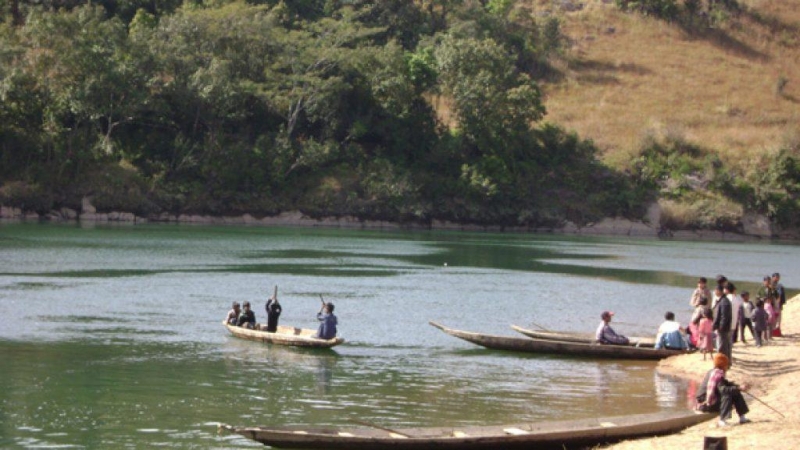
Image credit: West Khasi Hills
4. Explore some of India’s deepest and longest caves, including the Krem Puri Cave and Arwah Cave
The Jaintia, Garo and Khasi Hills of Meghalaya are home to some of the deepest and longest caves in India. Measuring 15 miles in length, the Krem Puri Cave in Mawsynram in the East Khasi Hills district, hold the distinction of being the longest sandstone cave in the world. But that’s just the headliner – there are more than 1,650 caverns in the state for exploring.
Cavers looking for a longer caving expedition can try the Krem Liat Prah Cave (besides the ‘Krem Puri’). Extending 21 miles in length, it is the longest natural cave system in India. If you’re seeking a cave that’s easier to get through, you can survey the Mawsmai Cave, near Sohra.
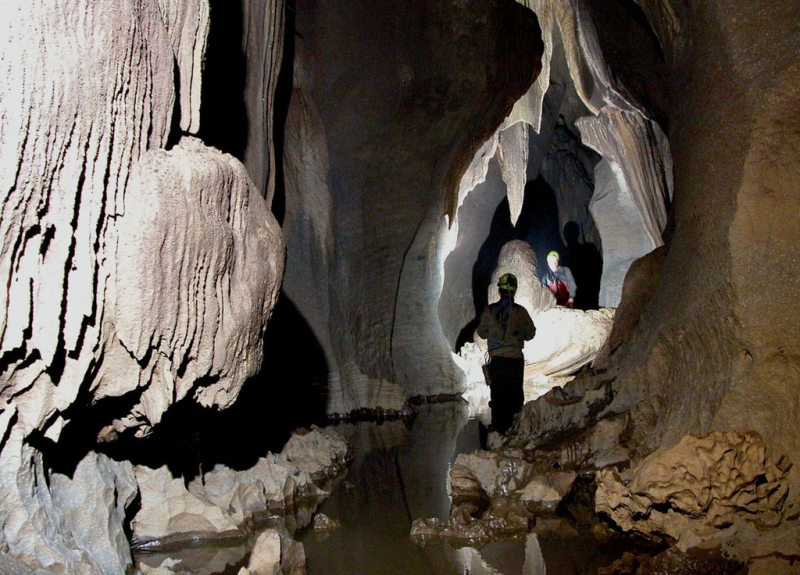
Image credit: Biospeleologist
You can also explore the lesser-known Arwah Caves, located a few kilometres away. Tucked inside a jungle, it’s a limestone cave encrusted by breathtaking stalagmites and stalactites, and fossils of shells, fish bones, etc. Expect to slouch, duck and crawl along the way.
#TripZillaTip: To explore these caves, we recommend hiring a local guide or sign up for a week-long caving expedition conducted by Meghalaya Adventurers Association https://www.facebook.com/Meghalaya-Adventurers-Association-488002144653544/. The best time for caving is from December to March.
5. Marvel at the country’s most beautiful waterfalls
The East and West Khasi Hills district of Meghalaya is home to many stunning waterfalls. The 1,115 ft. Nohkalikai Falls, in the East Khasi Hills near Sohra, leads the pack. Nearly seven times higher than Niagara Falls, it is believed to be India’s tallest plunge waterfall.
There is a huge observation deck, a fair distance away, from where you can enjoy a panoramic view of the mighty falls, as well as hear its rumble. Watching it stream down the lush hills and forming an emerald green pool at the base is something which would keep you rooted to this spot for hours. A ticket of 10 INR is required to access the deck overlooking the falls, and it can be purchased from the counter adjacent to the entry gate.
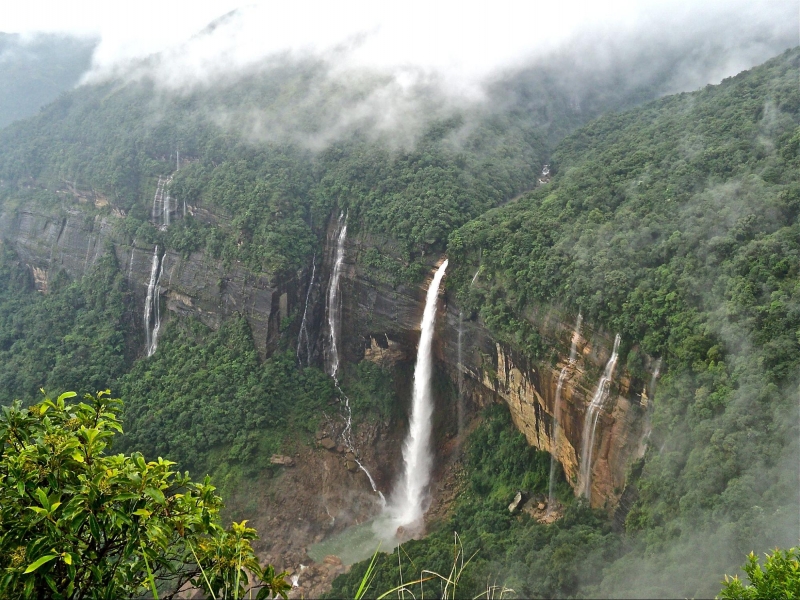
Image credit: Kunal Dalui
If you’re feeling adventurous, you can climb down to the bottom of the falls and further follow the forest trail to the famous double-decker root bridge in Nongriat village. Nearby are several waterfalls that are pretty and worth a visit too. A few kilometres away is Dainthlen Falls, which is a popular picnic spot.
South of Mawsmai village, in the East Khasi Hills, are the Seven Sisters Falls, locally known as Nohsngithiang Falls. It is a combination of seven streams that gushes down the 1,033-ft limestone cliffs. If time permits, do visit the multi-tiered Elephant Falls in Shillong, and the Krang Shuri Falls in West Jaintia Hills.
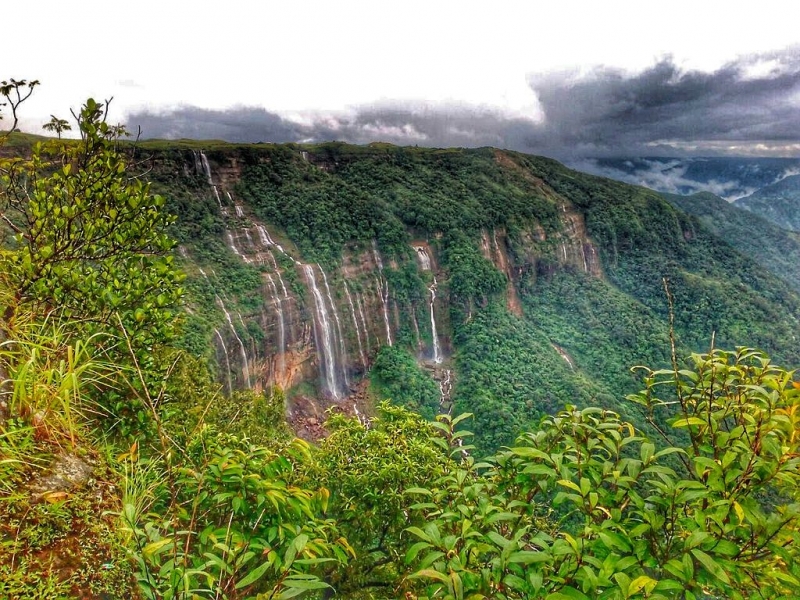
Image credit: Wittystef
6. Go kayaking at Umngot River
Located in the border town of Dawki, in the West Jaintia Hills district, the Umngot River is one of India’s cleanest rivers. It flows into Bangladesh through Dawki. The serenity and crystal-clear water of the river make it an ideal destination for kayaking – which can be combined with canoeing, fishing, camping, and also trekking, for an added adventure. While navigating your kayak down the river, you’ll be surrounded by high cliffs covered in lush greenery, as well as you can see the locals basking on the rocks.
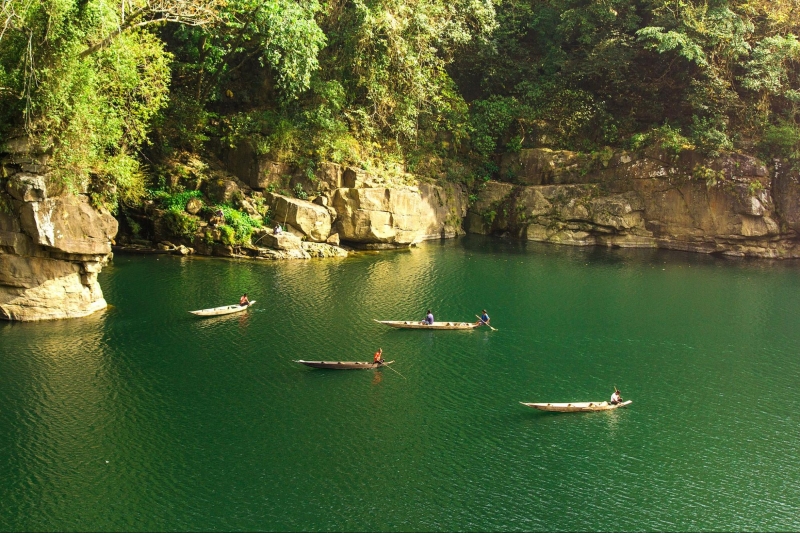
Image credit: AditiVerma2193
After appreciating the scenery, you can stop off for a soak in one of the many streams cascading through the mountains and spilling into the river. If it’s a hot day, you might prefer to go for a swim in the refreshing emerald green waters of the river. There’s also a small island full of pebbles, where you can stop and enjoy the scenery.
#TripZillaTip: October to April is the best time to go kayaking, and several companies can arrange tours here.
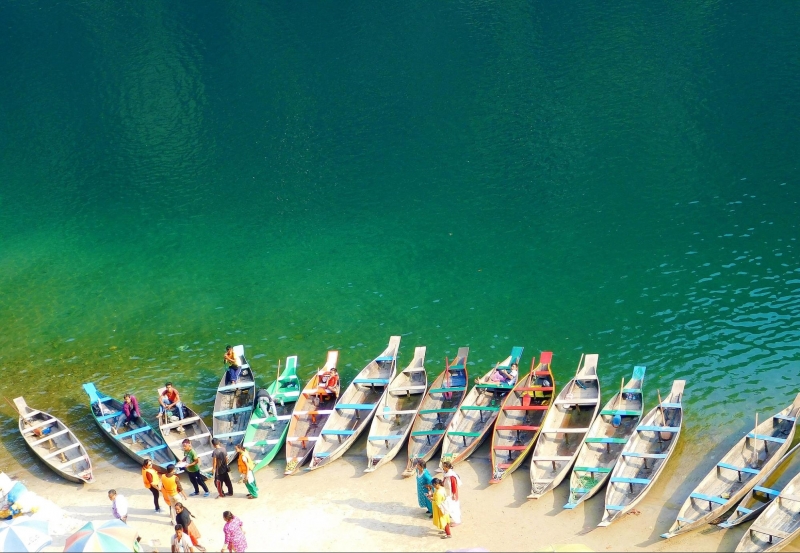
Image credit: Jyotishkardey
7. Hike through the Laitlum Canyon, Meghalaya’s hidden Grand Canyon
Located in the East Khasi Hills, about an hour from the centre of Meghalaya’s capital Shillong, the Laitlum Canyon – meaning ‘the end of hills’ – is one of Meghalaya’s most stunning natural attractions. It’s also hidden enough to not have you bump into other travellers. But like anything that’s beautiful and hidden, it takes some effort getting to it.
It can only be reached after trekking through rocky and uneven terrains – and once you’ve reached the top, you’ll be greeted with a panoramic view of and around Shillong. From here, you can hike down a steep stairway – passing through wild orchid groves and bamboo plantations – to the small village of Rasong. Inhabited by 300 odd people, the village depends on a rustic ropeway pulley that transports food and other commodities to them. You can stroll around the village to get a glimpse of local life and sample the traditional Khasi food.
8. Explore the sacred forest of Meghalaya, followed by a trip to the world’s tallest monoliths
If you’re in the East Khasi Hills district, be sure to spend some time exploring the Mawphlang Sacred Forest. This has been a sacred territory for the Khasi tribe for centuries. You can tour the forest alone, but we recommend visiting it with a local guide who will tell you about the beliefs and ceremonies held here, as well as the medicinal uses of the plants growing in the forest.
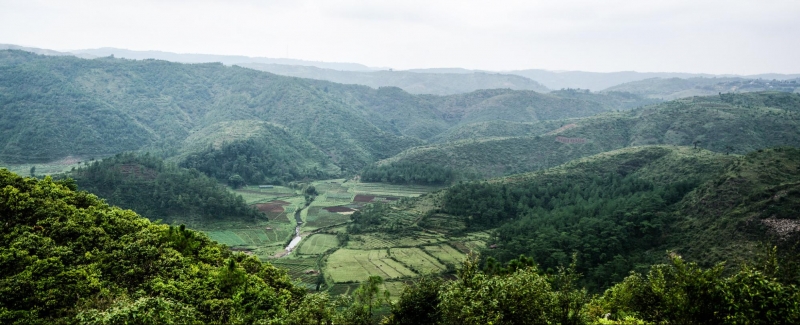
Image credit: Ashwin Kumar (via Flickr)
#TripZillaTip: Just remember not to take any object from the forest- be it a leaf, flower or a tiny pebble. It is believed that taking anything from this forest may upset the local deity called Labasa. There are tales of people who have broken this rule becoming ill (and even dying).
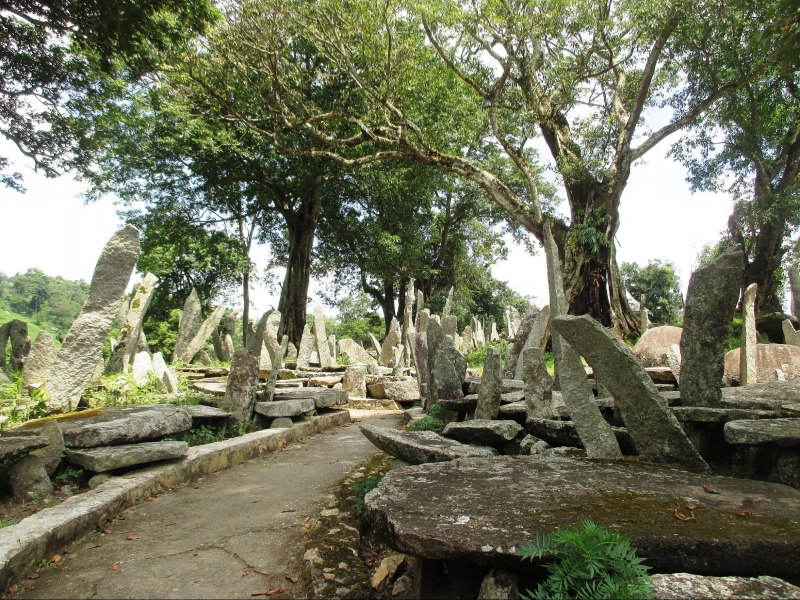
Image credit: Sreesarkar
About 2.5 hours from Mawphlang Sacred Forest is Nartiang Monoliths. Located in the Jaintia Hills, these monoliths are a collection of megalithic stones and some are believed to be 10 meters tall, making them the world’s tallest monoliths. They were erected by the local tribal groups and each represents a fascinating folktale or event.
9. Visit India’s Only Whistling Village
The small village of Kongthong, tucked in the lush jungles of the East Khasi Hills, looks like any other village in the region. Rows of rustic huts and farms are bordered with betelnut plants. Kongthong is remarkable not for how it looks, but for how it sounds – here, each individual has his or her unique tune attributed to him/her at birth and is called using that tune.
Locally known as jingrwai lawbei, the tune is mostly inspired by nature or natural sounds, and the duration is not more than a minute. While the origin of this oral tradition is unknown, it seems it has been around for centuries; some say it’s as old as the village itself. Whatever the reason is, jingrwai lawbei makes senses. In the wilderness of the rugged mountains and valleys of Kongthong, sounds travel fast, and so the need for the tune is obvious.
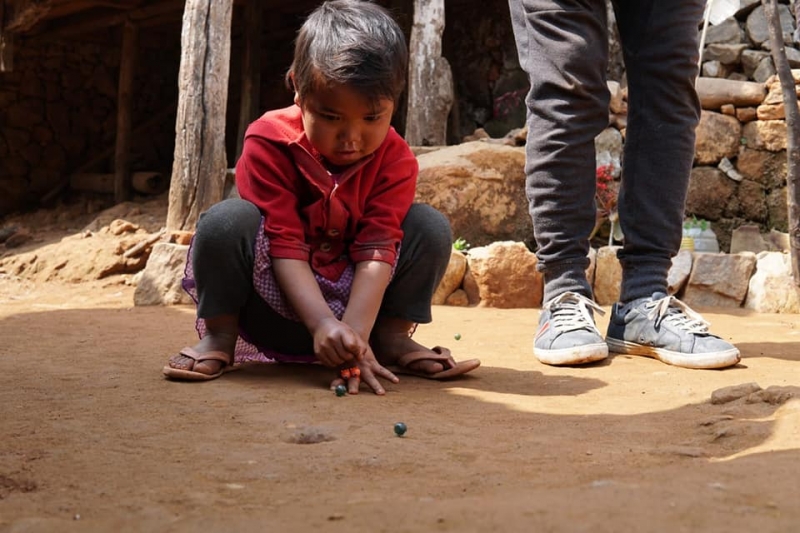
Image credit: Kongthong Travellers’ Nest
When you visit Meghalaya, make sure to take a tour of this village and witness the whistling call that has become an integral of the village’s culture. Apart from that, the village is known for its bee farms that are believed to produce some of the best quality organic honey in the state. You can buy a wide selection of honey here. It’s possible to stay in the village in a basic bamboo house called Travellers Nest, or you can pitch a tent and camp under the stars.
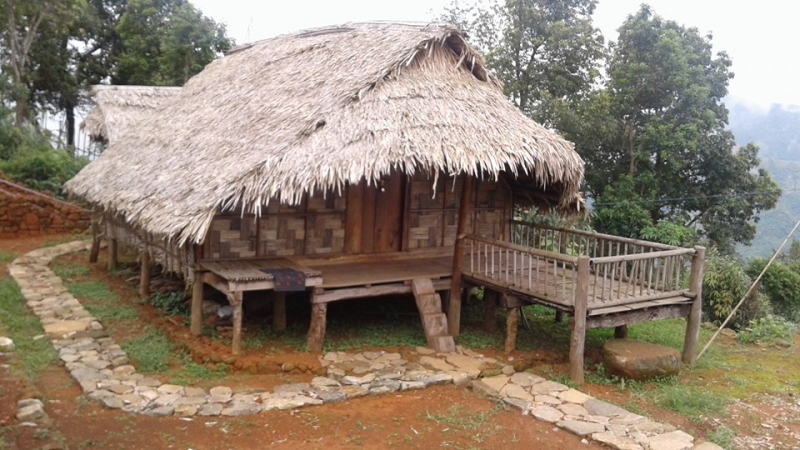
Image credit: Kongthong Travellers’ Nest
10. Meet the world’s largest surviving matrilineal tribes
Meghalaya is home to many tribes, mainly Khasi, Garo and Pnar. While the Garo tribe are located in the Garo Hills and Pnar tribe in the Jaintia Hills, the Khasi tribe is spread out across the state. The most notable feature of these tribes is their matrilineal tradition – where the ancestral property is inherited by the daughters; a man moves to a woman’s house after marriage and the children take their mother’s name. Also, you will often see women working at the markets. This trend has gone on for millennia – and these tribes are one of the world’s largest surviving matrilineal groups.
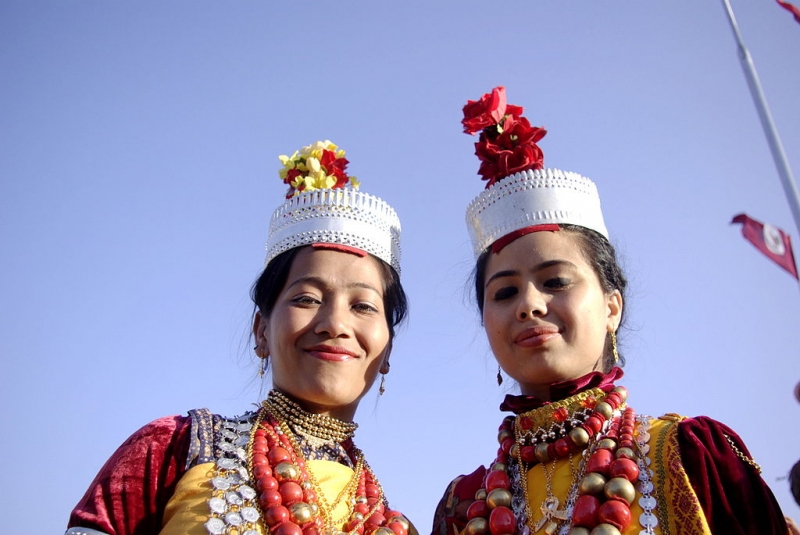
Image credit: Bogman
So, if a glimpse of true matrilineal tribal culture and life is what you’re after, then there’s nothing like staying with one of these tribal groups in Meghalaya. Also, this culture makes Meghalaya one of the safest destinations in India for female solo travellers.




